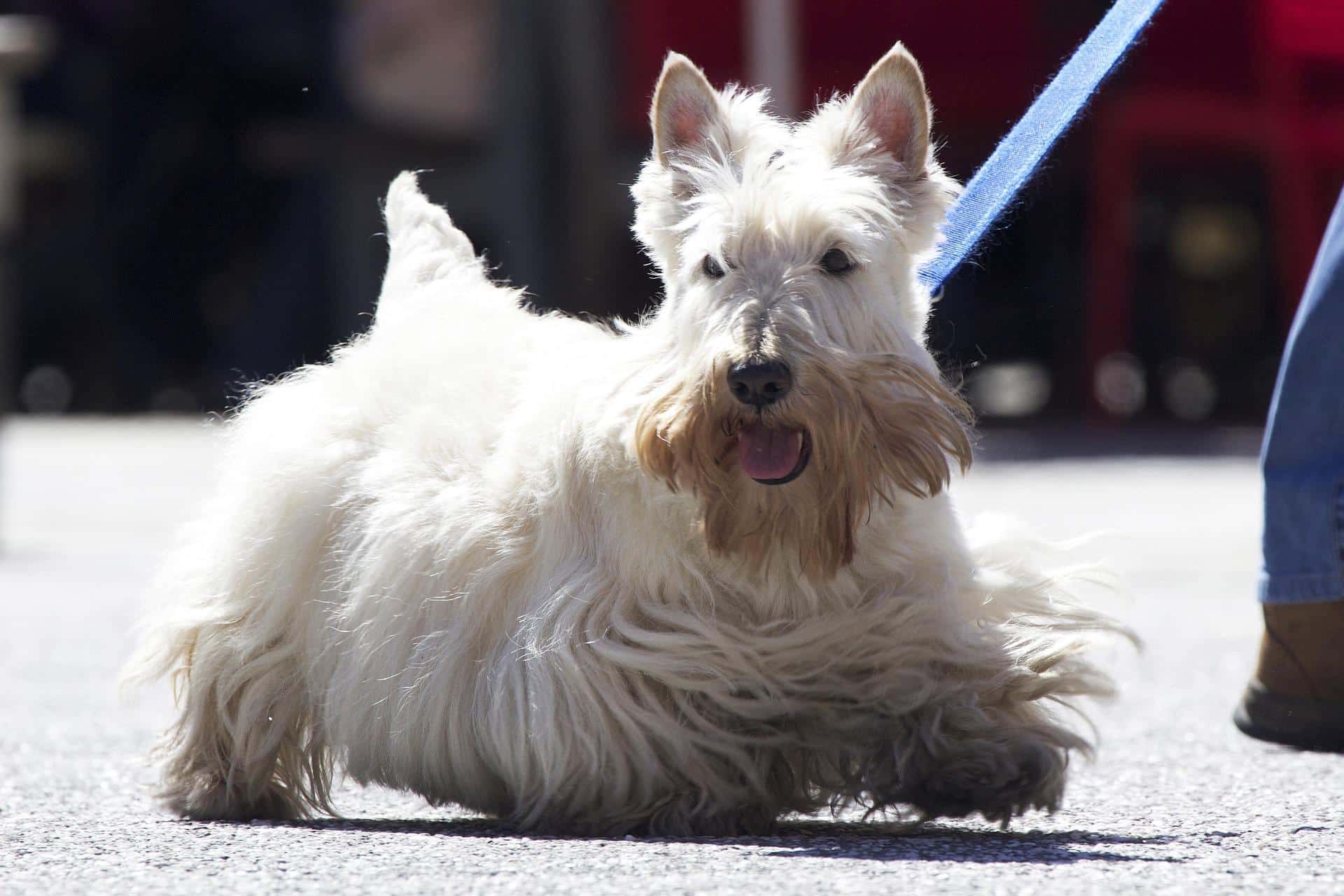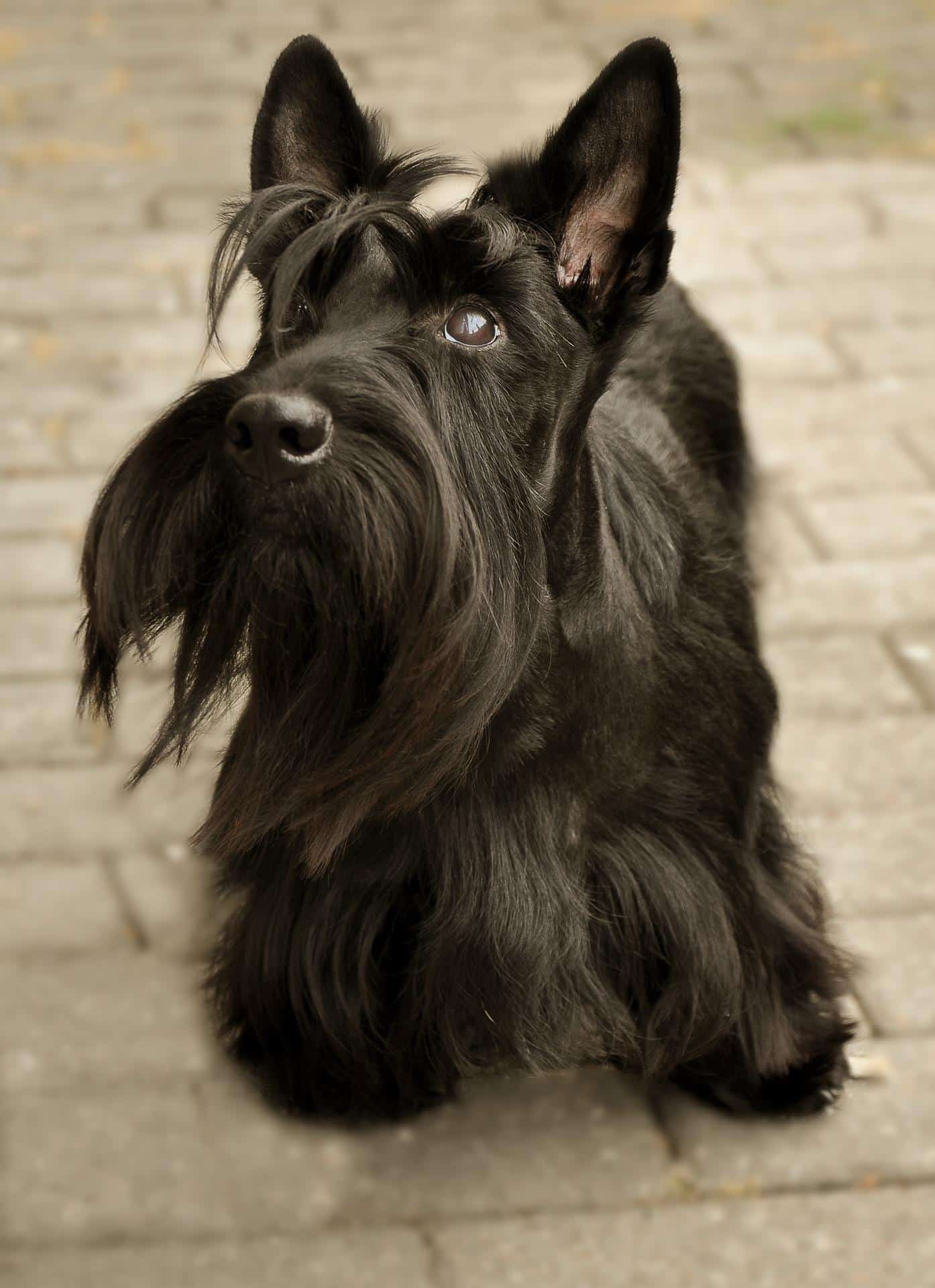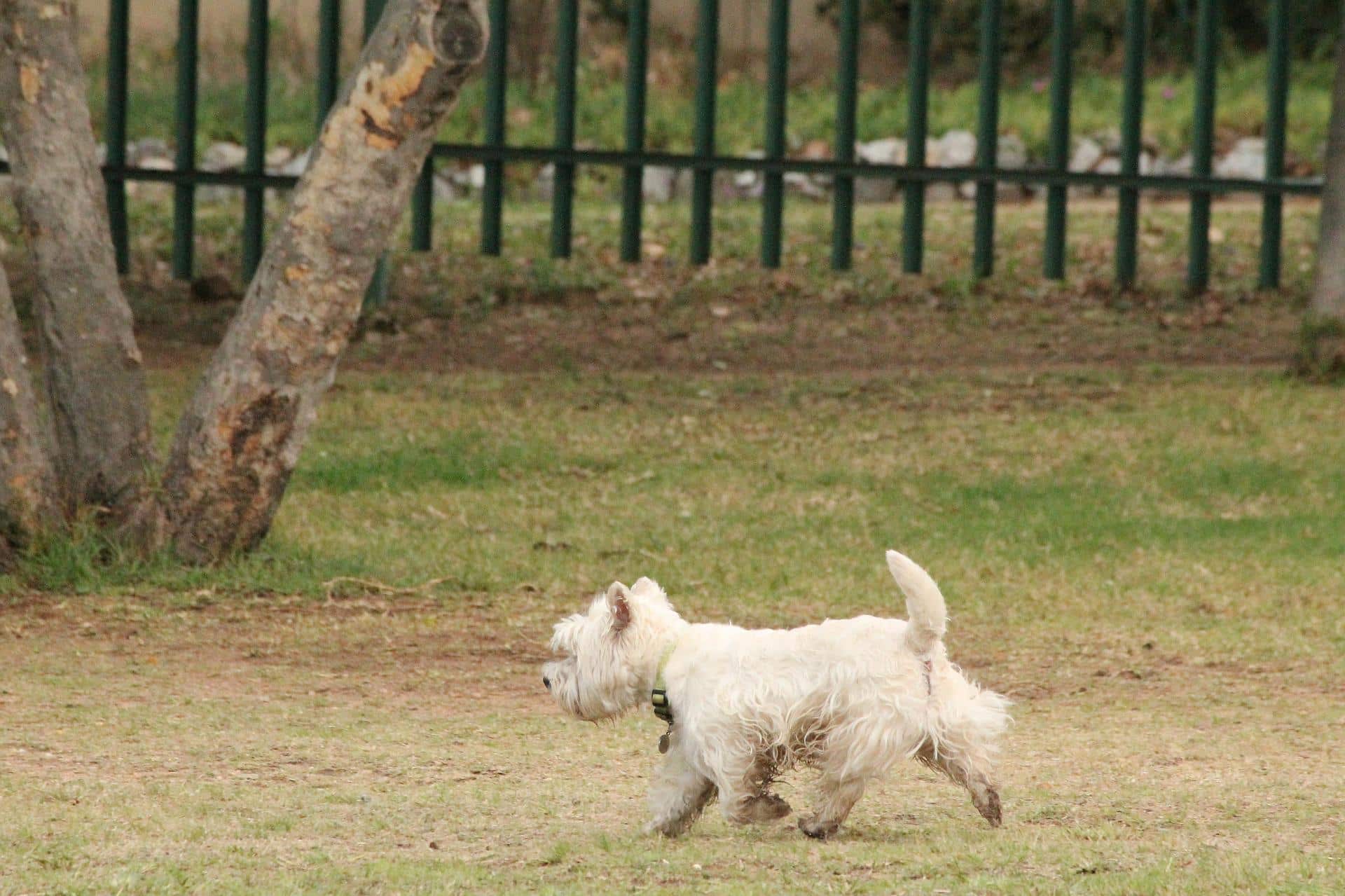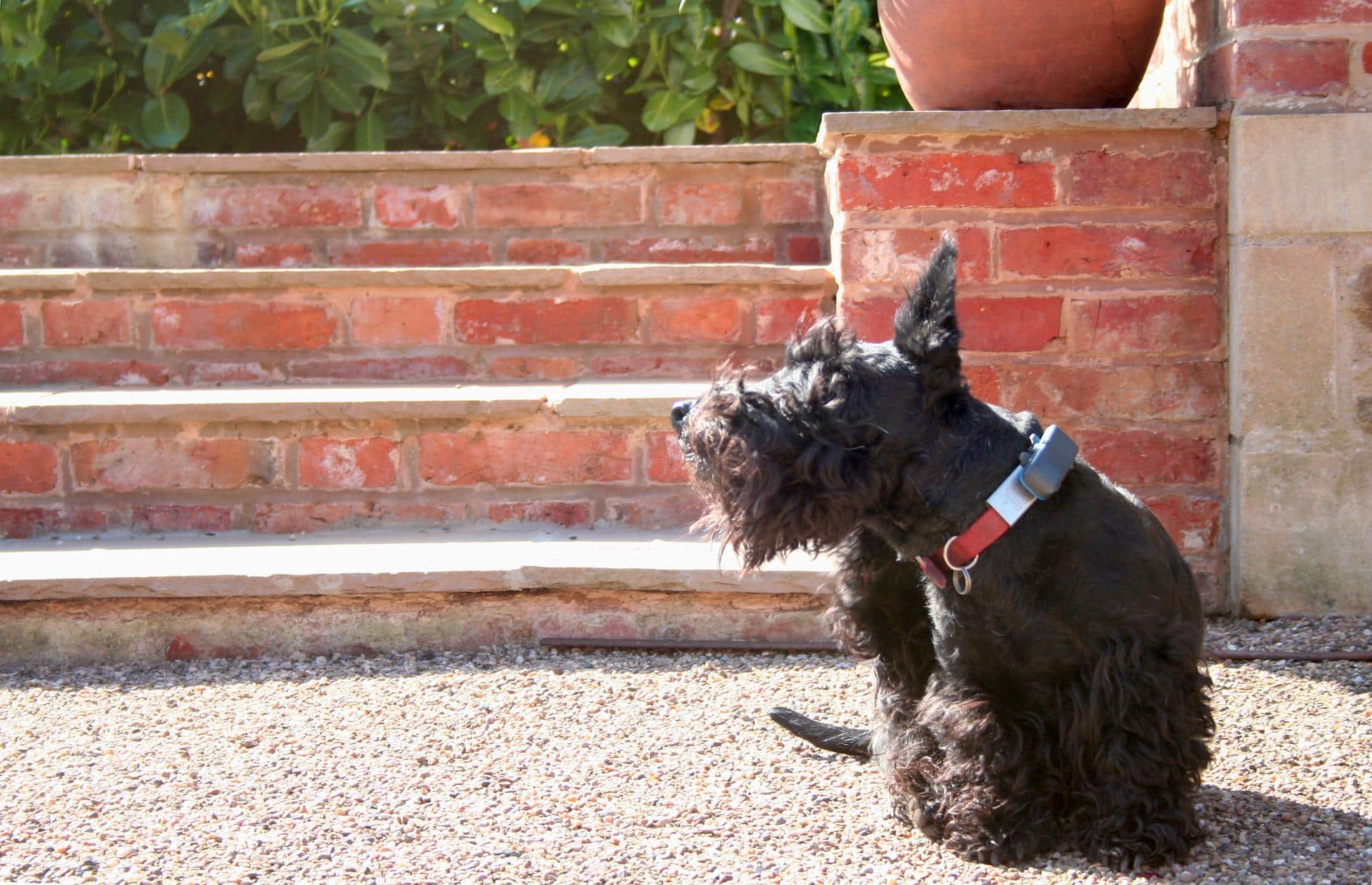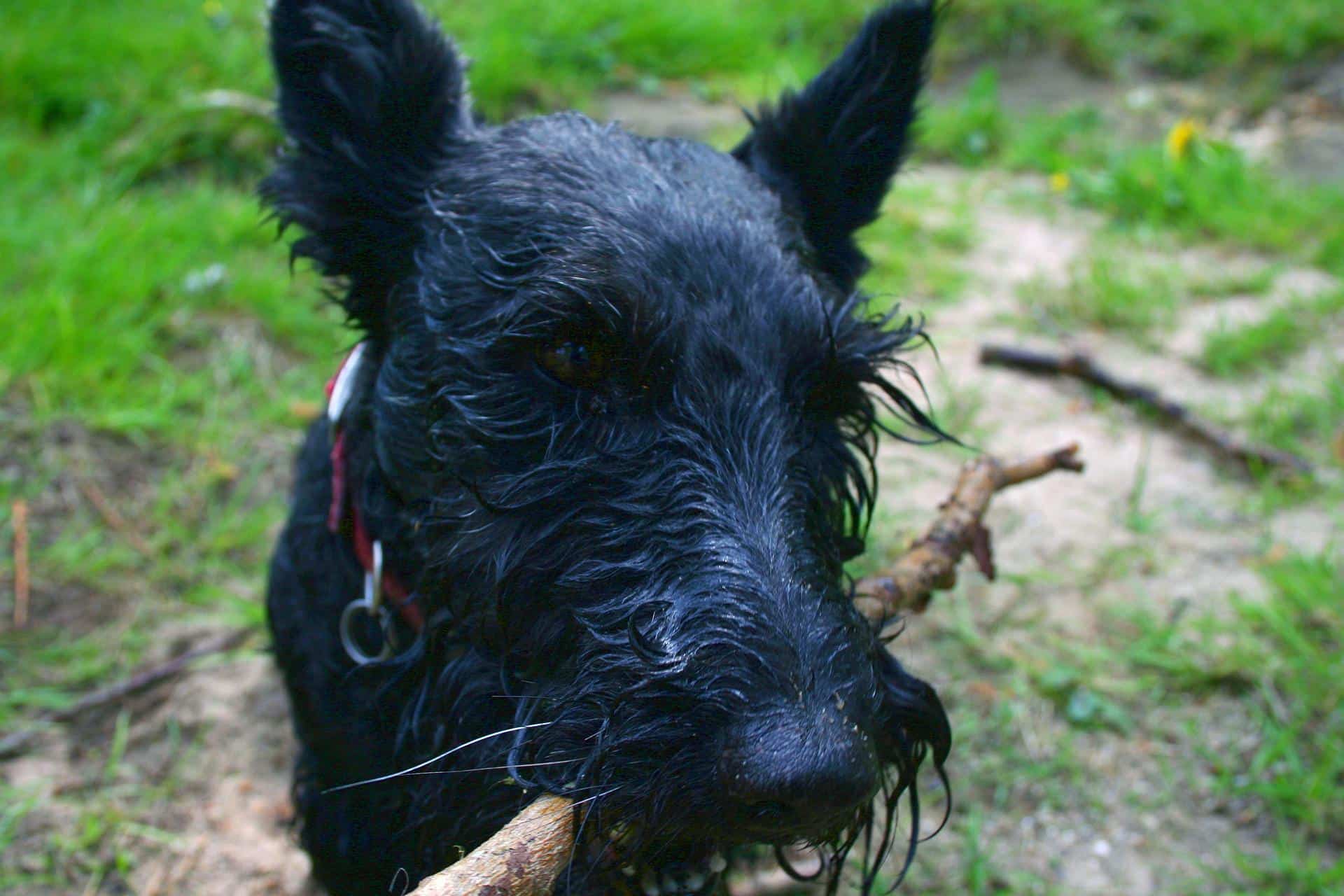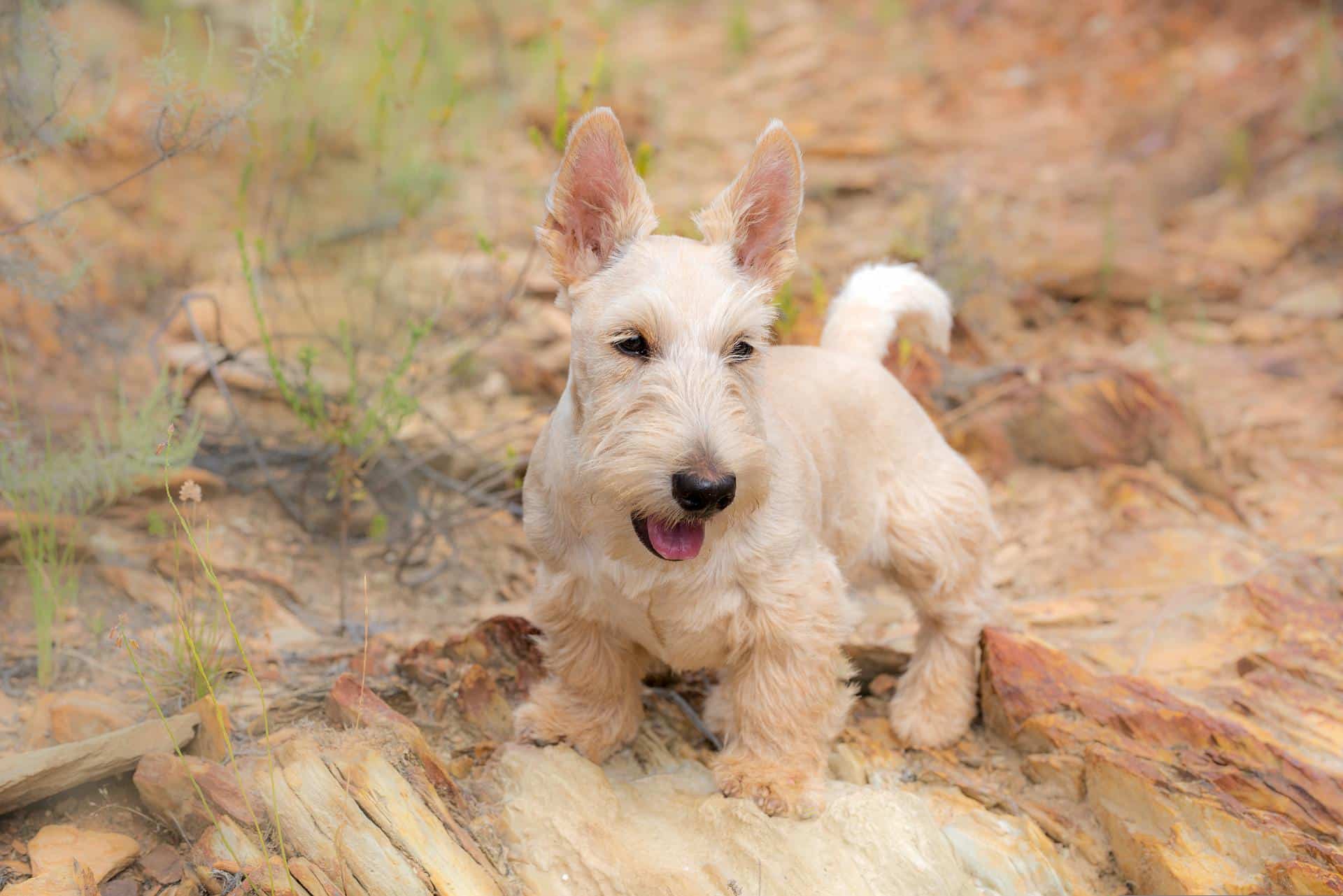
Von Willebrand disease (vWD) and craniomandibular osteopathy (CMO) are two inherited health issues identified in the breed; Scottie cramp, patellar luxation, and cerebellar abiotrophy (Cerebellar abiotrophy (CA), also known as cerebellar cortical abiotrophy (CCA), is a genetic neurological disorder that mostly affects certain horse, dog, and cat breeds.
It is also possible for individuals to create it. It happens when neurons in the cerebellar part of the brain called Purkinje cells begin to die off.
These cells have an impact on balance and coordination. They play an important function in the brain. Simply said, an animal's awareness of space and distance is lost without Purkinje cells, rendering balance and coordination impossible.)are also occasionally encountered in this breed.
Scotties can develop common eye diseases prevalent in other breeds, like cataracts and glaucoma, as they mature. There are no unique skin disorders that afflict the breed, however, they can be impacted by typical canine conditions such as parasites and mange (skin disease caused by parasitic mites). Scotties normally live between 11 and 13 years.
Cataracts-A lens inside the eye focuses light on the back of the eye or the retina. The retina is where vision takes place. The eye's anatomy is comparable to that of a camera, which has a lens to focus light on the film. A cataract is a clouded or opaque lens.
Parasites-fleas, ticks, mites,worms-it is important to check our dog's health really often to protect them and protect ourselves
Diabetes is on the list with increased frequency in Bichon Frises. Diabetes affects dogs that are unable to manage their sugar metabolism and require regular insulin injections. It is a dangerous ailment that must be diagnosed and treated as soon as possible. Weight loss is one of the symptoms, as is enhanced eating, drinking, and urination. Treatment involves a significant time and financial investment. Diabetic dogs with well-controlled diabetes now have the same life span as normal canines
The dog's kneecap (patella) may occasionally slide out of position (called patellar luxation). You could observe him running along and then suddenly picking up a hind leg and skipping or hopping for a few steps. He then pushes his leg out sideways to force his kneecap back into position, and he seems fine. If the disease is minor and just affects one leg, your dog may not need much more than arthritis medicine. When symptoms are severe, surgery to straighten the kneecap to prevent it from springing out of position may be required.
Scottish Terriers are more likely than other purebreds to get certain malignancies. According to the Veterinary Medical Data Program (1986), the following cancers appear to be more common in Scotties (when compared to other breeds): bladder cancer and other transitional cell carcinomas of the lower urinary tract; malignant melanoma; gastric carcinoma; squamous cell carcinoma of the skin; lymphosarcoma and nasal carcinoma. Mast cell sarcoma and hemangiosarcoma are two more malignancies that typically afflict Scotties.
According to research, Scottish Terriers are 20 times more likely than other breeds to get bladder cancer, and the most frequent kind of bladder cancer is transitional cell carcinoma of the bladder (TCC). According to Dr. Deborah Knapp of Purdue University School of Veterinary Medicine, TCC frequently arises in older dogs (average age 11 years) and is more common in females (2:1 female to male ratio).TCC signs include blood in the urine, straining to pee, and frequent urination, however owners should be aware that these symptoms may also be suggestive of a urinary tract infection.
Scottie cramp- is an autosomal recessive genetic condition that impairs the ability of the dog to walk. It is generated by a malfunction in the brain's circuits that govern muscular contraction as a result of a low serotonin level in the body. Symptoms often appear only when the dog seems to be under level of stress. If the dog is traveling quickly, the front legs are forced out to the side, the back arches, and the hind legs overflex, causing the dog to collapse. The disease is not associated with seizures, and the dog stays awake during the incident, with symptoms subsiding after the source of the stress is eliminated. There is still no genetic testing for Scottie's cramp.
A physical examination, full blood count, biochemistry profile, and urinalysis are all diagnostic investigations for Scottie's cramp. Although Scottie's cramp is a hereditary illness, it is an episodic, non-painful ailment. Scotty affected puppies and their littermates must not be bred since the illness can be transferred on to any future progeny they may have.
The craniomandibular osteopathy syndrome, also known as "Lion Jaw," "Westie Jaw," or "Scottie Jaw," is caused by excessive bone development in the lower jaw, which generally occurs between the ages of four and seven months. It is an autosomal recessive genetic condition, similar to Scottie Cramp, which can lead to pain in the dog when it tries to chew. The condition normally slows down between the ages of eleven and thirteen months and is occasionally followed by a sluggish partial or total regression. Craniomandibular osteopathy can afflict dogs from the same litter, and symptoms include difficulties gripping and chewing food, drooling, and swelling of the face, notably around the jaw.
Other dog breeds with this issue include the West Highland White Terrier, Cairn Terrier, Boston Terrier, as well as certain bigger breeds like Bullmastiffs. Genetic analysis for craniomandibular osteopathy is already available and will contribute to the identification of the craniomandibular osteopathy mutation.
Von Willebrand's disease is an inherited bleeding ailment that affects both canines and people. DNA testing, which is widely utilized by respectable breeders, has resulted in a significant drop in infected dogs. If the mutation is discovered in a dog, it must not be bred. This condition is caused by a deficiency of the von Willebrand factor, which plays a role in blood coagulation. This might result in altered platelet function and lengthy bleeding periods.
Affected dogs may experience nosebleeds and excessive bleeding after trauma or surgery. This disorder is classified into three forms, with Type I being the most frequent and Type II and III being rarer but more severe. The Scottish Terrier is prone to von Willebrand's disease type I.Type I is more prevalent in Doberman Pinschers, although it is also seen in Shetland Sheepdogs and Scottish Terriers. Most breeds are affected to some extent, although the Golden Retriever, German Shepherd Dog, Basset Hound, and Manchester Terrier are at a higher risk.
- Glaucoma, an eye illness that affects both dogs and humans, is a painful disease that can lead to blindness if left untreated. Squinting, watery eyes, the cornea turning blue (the transparent front section of the eye), and redness in the whites of the eyes are all symptoms. Pain is rarely observed by pet owners, despite the fact that it is there and can be intense. In severe situations, the eye may appear enlarged or swollen, as if it is popping.
If your dog has any of these symptoms seek emergency care, because they can be very serious (even a life-threatening condition):
- Head scratching or shaking, sore ears, or ear discharge
- Urinary inability or straining; discolored urine
- Cloudiness, redness, itching, or any other ocular anomaly
- Coughing, particularly at night or after waking up after sleeping, and fast breathing at rest
- Drinks and urinates more eats more, has a potbelly, and has a bad hair coat
- Weight loss, increased appetite, and thirst
- Gums in colors other than vivid pink
- Any unusual shaking, trembling, or involuntary tremors
- Leg stiffness, difficulty rising, sitting, using stairs, running, jumping, or "rabbit hopping"
The only dog breeds that have stayed in the White House more than three times are the Scottie and the German Shepherd. President Franklin D. Roosevelt was famous for having a Scottie named Fala, which he received as a present from his distant cousin, Margaret Suckley. The President adored Fala and rarely left the house without him.
Before Fala, Roosevelt owned numerous Scotties, including one called Duffy and another called Mr. Duffy. When the Roosevelts moved into the White House in 1933, Eleanor had a Scottish Terrier named Meggie. President George W. Bush recently had two black Scottish Terriers, Barney and Miss Beazley. Barney appeared in nine White House-produced films.
Other notable owners of Scotties include Queen Victoria, Eva Braun, Dwight D. Eisenhower, Jacqueline Kennedy Onassis, Ed Whitfield, Rudyard Kipling, Gilbert Chesterton, and Poland's President, Lech Kaczynski. Tatum O'Neal, an actress, had a Scottish Terrier. She was alleged to have relapsed into narcotics when her dog died of cancer and old age.


